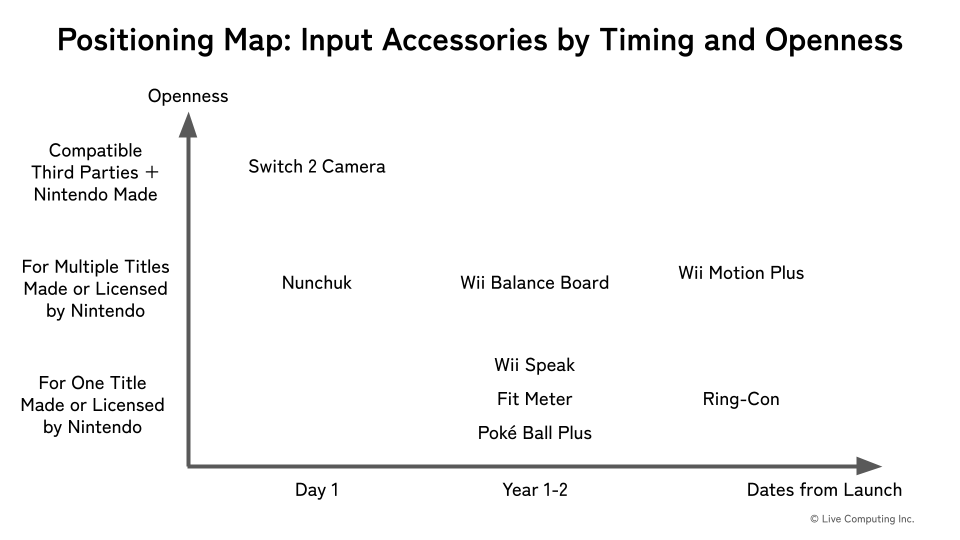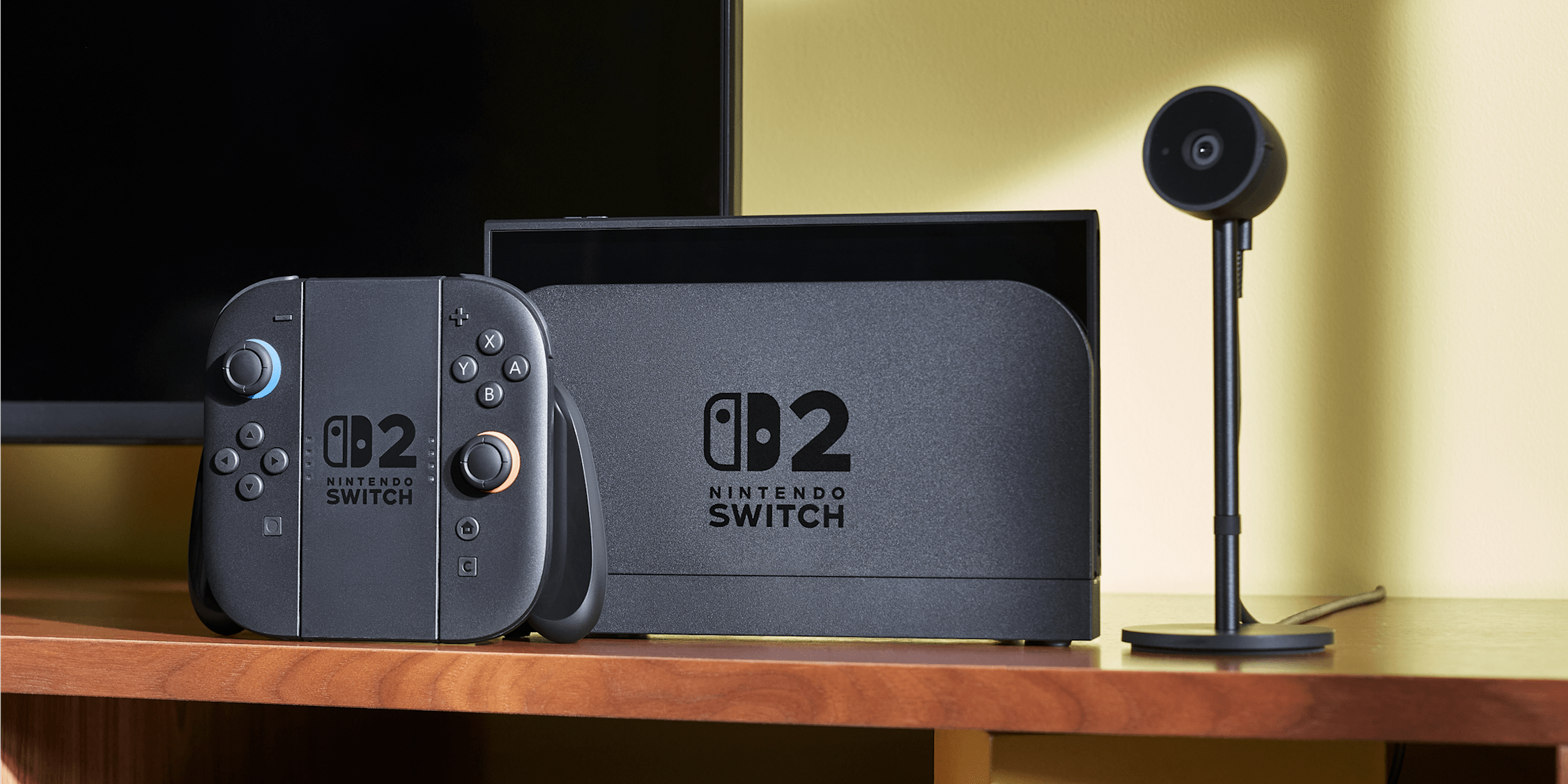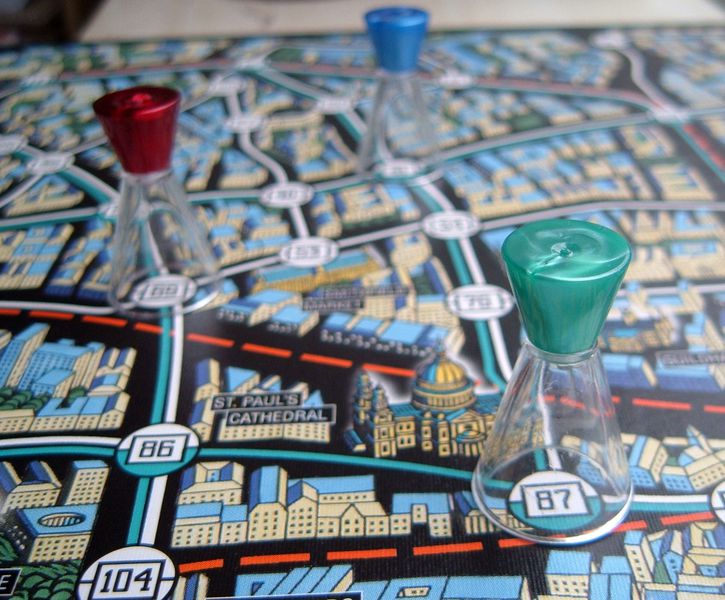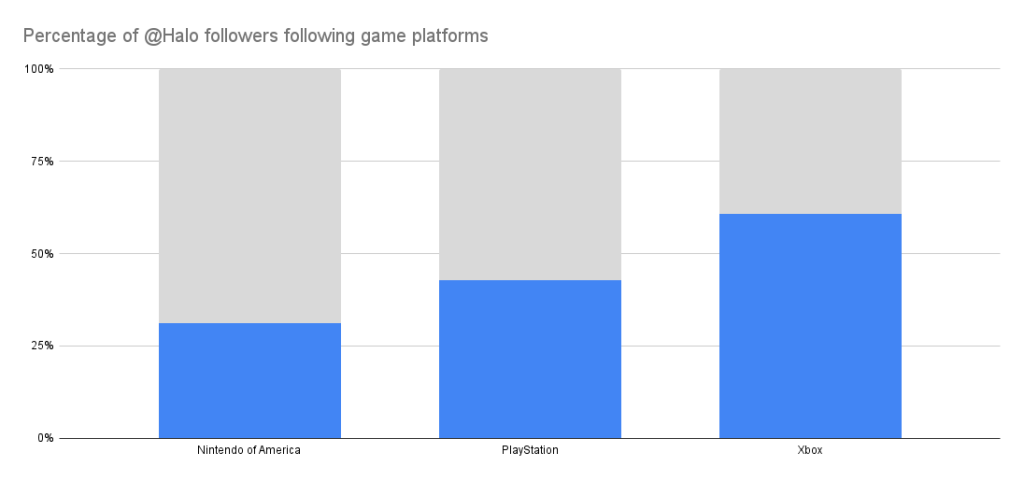Do you think the Nintendo Switch™ 2 Camera is just for group chats? It’s part of a broader accessory strategy that could expand how users interact with the platform — from games to fitness to expression. This Switch 2 Camera reminds me of the Wii Balance Board, which launched a year after the Wii and quietly reshaped how people used the console.
Input Accessories Positioning Map
The chart below maps Nintendo’s accessories based on two axes. I’ve limited this chart to input devices, to focus on their potential as a platform. The devices are from Wii, Wii U, Switch 1 and Switch 2.

Figure: Positioning of Nintendo input devices by launch timing and openness.
The x-axis shows how early they were introduced. On the left are devices released on day one of the console’s release, and on the right are devices released more than two years after launch. From this timing perspective, you can see that most devices were added after the launch, for additional experiences to retain players and boost console sales.
The y-axis shows how open they were for multiple titles and third-party manufacturers. You can see that few devices supported multiple titles. The Switch 2 Camera stands out, not only because it is available from day one, but also because it can be replaced by compatible non-licensed devices.
Nintendo’s Strategic Objectives
Nintendo may have three strategic goals.
First, it is to create new gaming experiences. Combined with the Joy-Con 2, you can capture body movement for sports games and rhythm games, similar to the games for the Wii Balance Board. But as a publisher you need to be careful investing in these titles, because you cannot take the game to another platform since it will be Switch 2 specific.
Second, it is to make game streaming easier. But this depends on how the Switch 2 system handles capturing, which we still don’t know much about.
Third, it is to retain users. You can let players track your exercise daily, like Wii Fit. As with live service games, game consoles need to keep users activating the system after they finish playing.
The Wii Balance Board had a scalability problem. It cost $89.99, only Nintendo could develop the hardware, and was released a year later from the Wii. On the other hand, the Switch 2 camera costs only $49.99. Nintendo even allows non-Nintendo USB-C® camera accessories to connect. They are providing the accessory from day one, which is critical for penetration.
When you design a hardware that will last over 5 years, you are developing an infrastructure. While you can update software, the hardware will stay in place for years, and if not prepared carefully, it can restrict the value of the platform later in the lifecycle. This is not limited to the game industry. Look at old Teslas, which may not be able to deliver Full Self-Driving, even when the software is ready.
An Infrastructure Layer in the Living Room

Switch 2 Camera (© Nintendo)
Nintendo is trying to create an infrastructure layer with a camera in your living room. That is why they are letting third party cameras connect to the system, and making it available from day one. How the infrastructure works is yet to be determined. I think even Nintendo is still trying to figure it out. But it is important to look into the sales and usage of cameras, as they may impact how we interact with Switch 2 in the living room.
Please note that although I’ve worked for The Pokemon Company over a decade ago, I have no specific knowledge about the Switch 2. I’m not working on a Switch 2 title at the moment either. All points here are based solely on public information.
Thank you for reading. I hope this post gave you something to think about.

